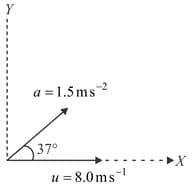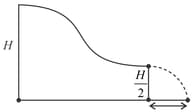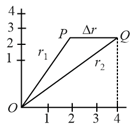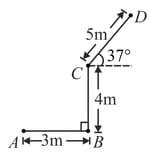Motion in Two Dimensions
Motion in Two Dimensions: Overview
This topic covers concepts, such as 2D Motion, Position Vector of an Object in 2D Motion, Displacement Vector of an Object in 2D Motion, Velocity Vector of an Object in 2D Motion, Magnitude of Velocity Vector of an Object in 2D Motion, Direction of Velocity Vector of an Object in 2D Motion, Components of Velocity Vector of an Object in 2D Motion, Acceleration Vector of an Object in 2D Motion, Magnitude of Acceleration Vector of an Object in 2D Motion, Direction of Acceleration Vector of an Object in 2D Motion & Components of Acceleration Vector of an Object in 2D Motion etc.
Important Questions on Motion in Two Dimensions
A body of moves in the plane under the action of a force given by Assuming that the body is at rest at time the velocity of the body at is:
The position vector of a particle is The velocity of the particle is:
A football player is moving southward and suddenly turns eastward with the same speed to avoid an opponent. The force that acts on the player while turning is :
If tangential acceleration vector of a speeding up particle atis find the angle
A particle attached to a light wire of length is projected horizontally with a velocity of . Calculate its net acceleration when wire becomes horizontal.
Displacement of a particle in periodic motion is expressed as . If the time period of particle motion is , then displacement of the particle in will be
Displacement of a particle is given . Find its velocity vector.
The position vector of a particle is given by . What is the angle between initial velocity and initial acceleration?
On an open ground, a boy follows a track that turns to his left by an angle of after every . Starting from a given turn, the displacement of the boy at the fourth turn will be
A ring of radius is initially at the coordinate plane such that it touches the positive sides of the and axes at and respectively. The ring starts rolling at a speed of along the positive -axis. The coordinates of the point after minutes and seconds are
A particle moves in the plane with a constant acceleration of in the direction making an angle of with the -axis. At the particle is at the origin and its velocity is along the -axis. Find the velocity and the position of the particle at .

A small object slides down with initial velocity equal to zero from the top of a smooth hill of height . The other end of the hill is horizontal and is at height as shown in the figure. The horizontal distance covered by the object from the end of the hill to the ground is

A particle is moving on a circular path of radius with uniform, speed . What is the displacement of the particle after it has described an angle of ?
A particle moves in a straight line so that distance where is time, then the acceleration is proportional to
Three particles and are situated at the vertices of an equilateral triangle. They start moving with equal speeds (remains constant during the whole motion) such that always heads towards towards & towards . Finally they meet at a point. Find out the angle by which the line connecting and rotates with respect to initial orientation in space by the time distance between and reduces to half of the initial distance between and .
Calculate displacement vector for a particle moving from point to .

A helicopter flies from a city to . The line joining and is along north-south and its length is . The speed of the helicopter is kept and wind blows from west to east with a speed of . The time taken by the helicopter is
A particle moves along a path as shown in the figure. Then the magnitude of net displacement of the particle from position to is:

A particle is moving towards North and acceleration of and particle is moving North-East direction with an acceleration of . Find relative acceleration of particle with respect to particle .
A wheel of radius is rolling on a horizontal surface then find out the displacement of point of contact after the wheel completes Revolution.
